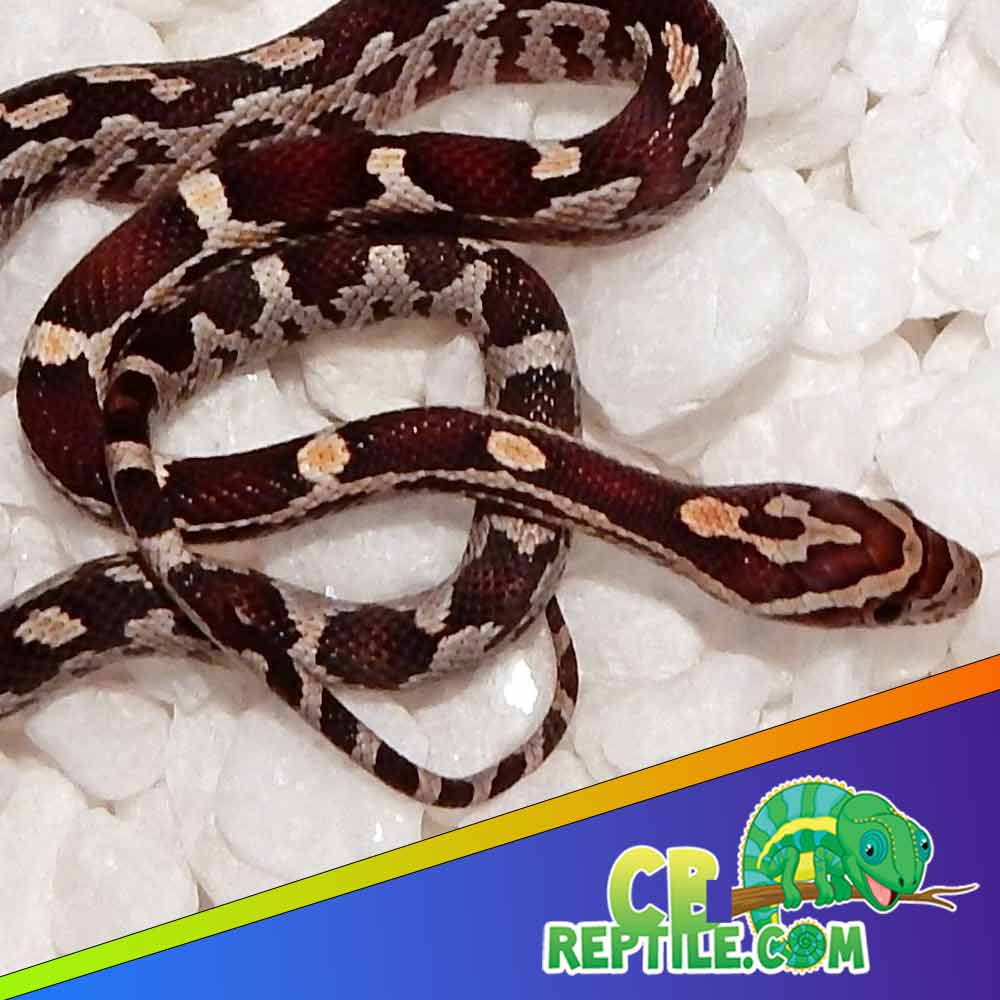Handling Your Pet Corn Snake: A Happy Keeper’s Guide
Ready to bring one home? Explore a healthy, captive-bred corn snake for sale today from CBReptile.com, the trusted name in reptile breeding.

Why Handling Your Corn Snake Is Important

Regular, gentle handling helps your corn snake become comfortable with human interaction. This builds trust, reduces stress during cage maintenance, and makes them easier to care for. Corn snakes are naturally curious and generally tolerate handling well, which is why they’re considered one of the best pet snakes for beginners.
When to Handle Your Corn Snake
- After settling in: Wait at least a week after bringing your snake home before handling, giving them time to adjust.
- Not during shed: Avoid handling when their eyes are cloudy, as vision is impaired.
- Not after meals: Wait at least 48 hours after feeding to prevent regurgitation.
- Calm moments: Handle your snake during times of low activity, not when it is in hunting mode.
How to Properly Handle Your Corn Snake
Handling your corn snake correctly ensures safety for both you and your pet. Here’s a simple step-by-step:
- Approach calmly: Move slowly and avoid sudden movements.
- Support the body: Use both hands to gently lift, supporting as much of the snake’s body as possible.
- Be gentle: Never grab or squeeze; let the snake move freely through your hands.
- Limit time: Start with short sessions (5–10 minutes) and gradually increase as your snake gets comfortable.
Habitat Setup for a Confident Snake
A secure and comfortable enclosure creates a stress-free environment that makes handling easier. Here’s what your corn snake needs:
Enclosure Size
- Hatchlings: 10–20 gallons to start.
- Juveniles: 20–30 gallons.
- Adults: 40+ gallons for full comfort.
Substrate & Décor
Aspen shavings, cypress mulch, or paper-based bedding all work well. Add multiple hides, branches, and foliage to create enrichment opportunities. Corn snakes love to explore, and having décor helps them feel secure, which translates into calmer handling sessions.
Temperature & Humidity

Maintaining proper temperatures is essential not only for digestion but also for your snake’s comfort during handling.
- Warm side: ~85°F for digestion and activity.
- Cool side: ~75°F for resting.
- Night: ~70°F is fine for most homes.
Humidity should be kept at 40–50%, with an increase during shedding. A humid hide ensures complete, stress-free sheds, which also keeps your snake comfortable and more relaxed during handling.
Feeding and Handling Balance
Feeding schedules play into handling routines. Corn snakes typically eat frozen/thawed rodents:
| Age | Food | Frequency |
|---|---|---|
| Hatchlings | Pinky mice | Every 5–7 days |
| Juveniles | Fuzzies/hoppers | Every 7 days |
| Adults | Adult mice or small rats | Every 7–10 days |
Always wait at least 48 hours after feeding before handling to avoid regurgitation and ensure your snake is comfortable.
Raising a Baby Corn Snake
Baby corn snakes are lively and may be a little wiggly at first, but with consistent, gentle handling, they quickly adapt. Starting with a healthy, captive-bred baby from CBReptile.com gives you the best foundation for success.
- Set up a secure 10–20 gallon enclosure with hides and décor.
- Keep the temperature gradient at 85°F warm side and 75°F cool side.
- Feed pinky mice every 5–7 days.
- Offer short, calm handling sessions after the baby has settled and eaten consistently.
- Gradually increase handling time as the snake grows more confident.
Why CBReptile.com Is the Best Cornsnake Breeder
Not all breeders are equal. Big-box pet stores often source reptiles from large-scale suppliers with questionable care practices. At CBReptile.com, corn snakes are captive-bred, parasite-free, and already feeding on frozen/thawed rodents. Their family-run approach emphasizes quality, genetics, and customer support, making them the top choice for corn snake enthusiasts across the USA.
If you’ve ever searched for cornsnakes for sale near me, you’ll know how important it is to choose a breeder that prioritizes animal health and customer satisfaction. CBReptile.com has built a reputation as the best in the business, helping keepers succeed from day one.
Daily & Weekly Care for Confident Handling
- Daily: Check temps, humidity, and water. Observe your snake’s activity.
- Weekly: Feed appropriately sized prey, handle gently, and clean up waste.
- Monthly: Perform a full enclosure clean and rotate décor to keep things interesting.
Happy Keeper’s Checklist
- Secure, escape-proof enclosure sized to your snake’s age.
- Maintain warm side ~85°F, cool side ~75°F.
- Provide hides, branches, and enrichment for security.
- Feed frozen/thawed rodents on schedule.
- Handle gently, consistently, and never right after feeding.
- Choose captive-bred babies from CBReptile.com for the best experience.

